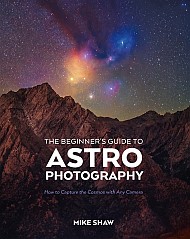Astronomy
The Conservation Success That Saved Wild Turkeys across the Country
Wild turkeys once nearly disappeared, but today they’re thriving.
We might have just seen the first hints of dark matter
We might have just seen the first hints of dark matter
Skipping Meals before Thanksgiving Dinner Can Be Bad for Gut Health
Skipping meals before a big holiday feast probably isn’t the best idea for gut health, experts say. Here’s how to prevent overeating on an empty stomach—and tips for if you do
We may need a fourth law of thermodynamics for living systems
We may need a fourth law of thermodynamics for living systems
Trump Orders Genesis Mission to Advance AI Breakthroughs
A new federal initiative aims to accelerate scientific discovery by uniting artificial intelligence with large federal datasets
Red Spider Nebula
Scientists Identify Five Distinct Eras of Human Brain Aging
Human brains go through five distinct phases of life, each defined by its own set of characteristics, according to a new study
The long-overlooked insects that could save our crops
The long-overlooked insects that could save our crops
Red Giant “Star Songs” Reveal Their Chaotic, Pasts
Astronomers have tuned in to the celestial “songs” of two red giant stars to reveal their hidden histories — including a case of stellar cannibalism.
The post Red Giant “Star Songs” Reveal Their Chaotic, Pasts appeared first on Sky & Telescope.
Which Thanksgiving Pie Causes the Biggest Blood Sugar Spike: Pecan, Apple or Pumpkin?
Scientific American asked experts which type of Thanksgiving pie spikes blood sugar the most—and how to eat healthier while still enjoying the holidays
Modeling the Fight Between Charged Lunar Dust and Spacecraft Coatings
Understanding how exactly lunar dust sticks to surfaces is going to be important once we start having a long-term sustainable presence on the Moon. Dust on the Moon is notoriously sticky and damaging to equipment, as well as being hazardous to astronaut’s health. While there has been plenty of studies into lunar dust and its implications, we still lack a model that can effectively describe the precise physical mechanisms the dust uses to adhere to surfaces. A paper released last year from Yue Feng of the Beijing Institute of Technology and their colleagues showcases a model that could be used to understand how lunar dust sticks to spacecraft - and what we can do about it.
AI Is Transforming Thanksgiving Meals, Memories and Family Traditions
As AI slips into kitchens, conversations and memories, Thanksgiving has become a test of how much we’re willing to outsource
This Fossil Is Rewriting the Story of How Plants Spread across the Planet
An enigmatic group of fossil organisms has finally been identified—and is changing the story of how plants took root on land
Ethiopian volcanic plume
The Moss That Survived Nine Months in Space
Moss spores spent nine months strapped to the outside of the International Space Station, exposed to vacuum, cosmic radiation, temperature swings from minus 196°C to 55°C, and unfiltered solar ultraviolet light. Over 80 percent survived the ordeal and returned to Earth still capable of growing into new moss plants. This remarkable resilience, demonstrated by one of Earth's earliest land plants, suggests that life's fundamental mechanisms may be far more robust in the face of space conditions than previously imagined.


